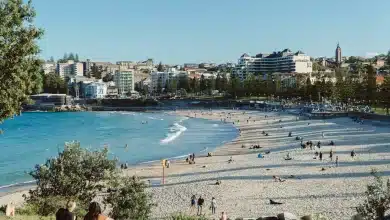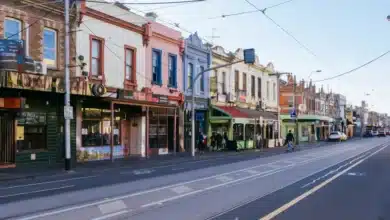Adelaide’s Cheapest Suburbs To Rent In
Adelaide is Australia’s fifth-most populous city, with hundreds of people moving here searching for better work opportunities, higher education, and a better way of life. So, if you are thinking about moving to South Australia’s capital, you have made the perfect decision!
However, most people who move to this city find it difficult to find a place to rent at a reasonable price—people who already live in the town look for a low-cost rental apartment to save money.
Adelaide’s median rent is $472 per week, which is higher than other capital cities. So, if you want to save money, you could hire inexpensive removalists in Adelaide and relocate to a suburb with low rental prices. Check out this detailed list of Adelaide’s quietest rental suburbs if you want to learn more about these areas. Let’s have a look at it!
1. Brooklyn Park
Brooklyn Park is a great spot to spend time with the family and is reasonably priced. It offers pleasant neighbors, a peaceful atmosphere, and plenty of vegetation. Within walking distance are schools and childcare centers. Brooklyn Park’s location is also wonderful, as it is only a 5-minute walk from the city, the beach, and the airport.
The median rent in this area is $283 per week, making it one of Adelaide’s most affordable suburbs. That is why 41% of the population lives in rented housing. The population is over 5,000 people, and 58 percent of the families live with their children. You may easily visit Adelaide Zoo, Port Adelaide, South Australian Museum, Art Gallery of South Australia, and many more because it is close to the city.
2. West Beach
West Beach is a lovely western suburb of Adelaide, not far from the city Centre. Whether you are a professional or planning to relocate with your family, this is an excellent choice because it provides many amenities. West Beach has a median rent of $298, making it one of Adelaide’s most affordable suburbs.
This suburb has a population of over 5,000 people, with 53 percent of families having children. If you are moving with children, you will need to contact professional movers in Adelaide, and they will make sure that your relocation goes smoothly. It’s also in a fantastic position, and the Adelaide Botanic Garden and the Art Gallery of South Australia are only 15 to 20 minutes away.
3. Elizabeth Grove
Elizabeth Grove is another excellent Adelaide suburb with the lowest rental prices. You can easily afford this home because the median rent in this suburb is $251 per week. This area provides plenty of greenery and pure air, making it ideal for those who enjoy being close to nature.
Whether it’s childcare, schools, medical facilities, or a huge shopping mall, everything you need is only a 10-minute drive away. Elizabeth Grove has almost 2,000 people, with 56 percent of the families living in rented housing. You may go to Glenelg Beach, Rundle Mall, Henley Beach, Adelaide Central Market, and other surrounding attractions if you move here.
4. Elizabeth Park
Elizabeth Park is a beautiful suburb with plenty of greenery for its residents. It includes approximately ten parks, which account for nearly 25.3 percent of the entire area. As a result, this suburb is highly recommended for individuals who love to live close to nature and a peaceful environment. Elizabeth Park has a median rent of $270 per week, so it’s worth considering if you are seeking the lowest rental in Adelaide.
Many people prefer to move here and opt for rental property because of the low rental costs. This suburb has a population of over 4,000 people, with 47 percent of residents renting. In addition, the majority of the family lives here with their children. If you are moving here with children, hire Adelaide removalists to make the process go smoothly. Many exciting attractions may be visited from this suburb, including the Adelaide Zoo, the Art Gallery of South Australia, Port Adelaide, the South Australian Museum, and others.
5. Smithfield Plains
Smithfield Plains is a must-visit if you are looking for the cheapest rental suburbs in Adelaide. It’s a beautiful place with multiple new houses, a new town Centre, new schools, and plenty of other new restaurants. This location offers a lot of vegetation, pure air, and a pleasant environment, with 12 parks covering over 19 percent of the total area. Smithfield Plains has a low median house rent of $278 per week, so that you may settle down here.
As a result, 55 percent of families live in rented housing. This is an excellent location if you intend to move with your children. Because this area has all the amenities you could ask for, 74% of families with children live here. If you move to this suburb, you may go to Rundle Mall, Adelaide Central Market, Adelaide Zoo, and other surrounding attractions. All of these locations are around 30 to 40 minutes through the drive.
6. Davoren Park
Move to Davoren Park if you are searching for a family-friendly area in Adelaide with affordable rental properties. This town has over 7,000 people, and nearly 70% of the households have children, and residents benefit from cheap living costs and educational and medical services.
Greenery, clean air, solitude, security, and a friendly neighborhood are all available here. The median rent in this area is $251, making it a reasonably priced suburb. That is why 51 percent of the population lives in rented housing. Davoren Park is around 27 kilometers from the city Centre, although the city is easily accessible due to the nearby train station. If you wish to move to this area, you must conduct extensive research. So invest more time in your research and make your transfer as simple as possible with the help of experienced Adelaide removalists.
7. Clarence Park
Clarence Park is a beautiful area in Adelaide that provides residents with plenty of greenery and a peaceful environment. The Unley Shopping Centers, the CBD, Castle Plaza, King William Street, and Kurralta Park are nearby.
The median house rent in this suburb is $300, so if you are looking for the cheapest rentals in Adelaide, this is the place to go. It is a perfect location for those looking for low-cost rentals without sacrificing other amenities such as security, cleanliness, decent public transportation, and a friendly atmosphere. Many people prefer to move here with their children, and approximately 60% of the households have children.
If you choose to move to this area, you and your family will be able to visit a variety of sites on weekends and holidays. You will have easy access to destinations like Adelaide Zoo, Port Adelaide, Adelaide Central Market, Art Gallery of South Australia, South Australian Museum, and others because Clarence Park is adjacent to the city.
8. Richmond
Richmond is a lovely, peaceful, safe, clean, and welcoming community. It is a fantastic choice for schools, community spirit, parks and leisure, public transportation, and shopping. The rental value of this suburb is relatively reasonable, considering all of the amenities it provides and its location, which is only a few minutes away from the central city.
Richmond has a median house rent of $335, so if you are searching for the lowest rental in Adelaide, this is the place to go. The rental property is residence to 45 percent of families, with 62 percent of the households having children. These figures demonstrate that families prefer this location when looking for a rental property. If you move to this area, you will have access to several attractions such as the South Australian Museum, Adelaide Zoo, and the Art Gallery of South Australia, among others.
There is no doubt that Adelaide is a more expensive city than other cities, with higher property prices and rents, however, there are some suburbs that offer the city’s cheapest rentals. If you want to save money, you should seek out such locations and settle there.




